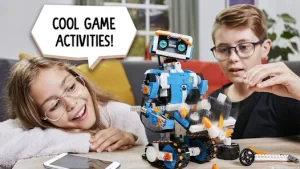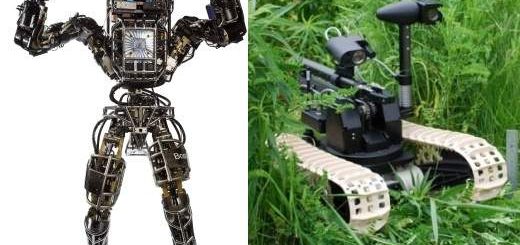Lego robot features, advantages and disadvantages, What can Lego robots do?
Lego robots, such as those built using LEGO Mindstorms, LEGO SPIKE Prime, or LEGO Boost, offer a great platform for learning robotics, coding, and engineering. LEGO robots can perform many tasks depending on how they are built and programmed. They are used for education, experimentation, and fun, but they also introduce real-world robotics concepts.
Lego robot features
LEGO robots come with various features that make them versatile, educational, and fun to use.
1. LEGO robots have modular and customizable designs, They are built using LEGO bricks, allowing easy modifications. Different motors, sensors, and gears can be added. LEGO robot supports various robot types (cars, humanoids, arms, animals, etc.).
2. LEGO robots have Intelligent Control Units (Hubs/Bricks), Most LEGO robots have a programmable control unit:
- LEGO Mindstorms EV3 & NXT – Older but powerful robotic bricks.
- LEGO SPIKE Prime Hub – Modern and beginner-friendly with multiple ports.
- LEGO Boost Move Hub – A basic hub for younger users.
- Features built-in processors, memory, and connectivity.
3. LEGO robots have Multiple Programming Options
- Block-Based Coding – Drag-and-drop coding (Scratch, LEGO software).
- Text-Based Coding – Python, Java, or C++ for advanced users.
- Remote Control – Use mobile apps or controllers to operate the robot.
4. LEGO robots come with Sensors for Interaction. They can sense and react using:
- Ultrasonic Sensor – Detects distance and obstacles.
- Color/Light Sensor – Identifies colors and light intensity.
- Touch Sensor – Detects pressing or bumping into objects.
- Gyro Sensor – Measures rotation and balance.
5. LEGO robots come with Motors for Movement and Actions
- Large Motors – Provide strong movement for driving or lifting.
- Medium Motors – Used for finer movements (e.g., robotic arms).
- Servo Motors – Allow precise control of angles and speeds.
6. LEGO robots come with Connectivity and Communication
- Bluetooth and Wi-Fi – Wireless control and programming.
- USB and MicroSD Slots – For additional storage and programming.
- Cloud & IoT Integration – Some models can connect to cloud services.
7. LEGO robots come with AI and Machine Learning Capabilities
- Advanced users can integrate AI tools (Google AI, Raspberry Pi).
- Robots can recognize voices, gestures, and objects with added components.
8. LEGO robots are compatible with other platforms, They work with Raspberry Pi, Arduino, and 3D-printed parts for expansion. Some LEGO robots support Scratch, Python, and JavaScript for coding.
9. LEGO robots come with fun and competitive features, They are used in the FIRST LEGO League (FLL) and World Robot Olympiad (WRO). They can be programmed to play games, dance, solve mazes, and more.
What can Lego robots do?
Basic Functions:
- Move and Navigate – LEGO robots can drive forward, backward, turn, and follow paths using wheels, tracks, or legs.
- Sense the Environment – LEGO robots can detect obstacles, colors, and light using sensors.
- Pick Up and Manipulate Objects – LEGO robots use robotic arms or claws to grab and move items.
- React to Sounds and Touch – LEGO robots respond to button presses, claps, or other sound cues.
Educational & STEM Learning:
- Learn Coding – Program LEGO robots using block-based (Scratch, LEGO Mindstorms) or text-based (Python, Java) coding languages.
- Simulate AI & Machine Learning – Some advanced models (with Raspberry Pi or cloud integration) can recognize images, voices, and gestures.
- Mathematics & Physics Experiments – Use LEGO robots for real-world applications like calculating speed, angles, and force.
Advanced Capabilities:
- Autonomous Navigation – LEGO robots can avoid obstacles and follow pre-programmed routes using infrared or ultrasonic sensors.
- Line Following & Maze Solving – LEGO robots can follow a black line on a white surface or solve a maze autonomously.
- Robotic Arms & Grippers – LEGO robots can pick up and sort objects based on color, size, or shape.
- Balance & Walk – Some robots (like bipedal LEGO robots) can walk like a human or balance on two wheels (e.g., a Segway-style robot).
- Wireless Communication – LEGO robots can connect via Bluetooth or Wi-Fi to control the robot remotely using a smartphone or computer.
- Voice & Gesture Recognition – Advanced users can integrate AI tools to allow voice commands or gesture-based controls.
Fun & Competitive Uses:
- Compete in LEGO Robotics Challenges – LEGO robots can join competitions like the FIRST LEGO League (FLL) or the World Robot Olympiad (WRO).
- Create Custom Robots – Design anything from robotic pets to self-driving cars.
- Entertainment & Art – Program LEGO robots to dance, play music, or even draw.
Real-World Applications:
- Simulating Industrial Robots – LEGO robots can teach students how automated manufacturing robots work.
- Assistive Technology Prototypes – Build basic robotic helpers for tasks like lifting objects or guiding visually impaired users.
- Environmental Monitoring – LEGO robots can use sensors to track temperature, humidity, or light levels.
Lego robot advantages
- Educational and Fun – LEGO robot helps students and hobbyists learn programming, engineering, and problem-solving through hands-on experience.
- Modular and Customizable – LEGO pieces allow endless design possibilities and easy modifications.
- User-Friendly – The LEGO robot is designed for beginners with simple drag-and-drop programming (e.g., Scratch-based coding) and more advanced options (Python, Java).
- Safe for All Ages – LEGO robot uses non-toxic, lightweight plastic parts with no sharp edges, making it safe for kids.
- Encourages Creativity – Users can design and build robots for various tasks, from simple cars to advanced humanoid bots.
- Strong Community Support – Large online communities, tutorials, and competitions (e.g., FIRST LEGO League) offer guidance and challenges.
- Reusable Components – Motors, sensors, and bricks can be used for multiple projects, reducing waste and long-term costs.
Disadvantages of LEGO Robots
- Expensive – LEGO robotics kits can be costly compared to other DIY robotics platforms (e.g., Arduino, Raspberry Pi).
- Limited Real-World Applications – Mostly for education; lacks industrial or professional-level functionality.
- Plastic Durability – While sturdy, LEGO pieces may not handle extreme conditions like metal-based robots.
- Limited Advanced Features – While great for beginners, some sensors, motors, and computing capabilities are less powerful than professional robotics kits.
- Requires Additional Hardware for Advanced Use – To extend functionality (e.g., AI or advanced programming), external devices like Raspberry Pi or custom sensors may be needed.
- Battery Dependent – Many LEGO robots rely on rechargeable batteries, which may limit usage time and require frequent recharging.
Is a LEGO Robot Worth It?
- LEGO robot is great for: Beginners, students, teachers, and hobbyists looking for an easy-to-use, fun, and educational robotics kit.
- LEGO robot is not ideal for: Advanced users needing industrial or research-grade robotics.
You can follow science online on YouTube from this link: Science online
Humanoid robots use, risks, advantages, and disadvantages
Wheeled robots types, uses, advantages, and disadvantages
Robotics uses, Robotic programs types, Artificial Intelligence importance & risks




